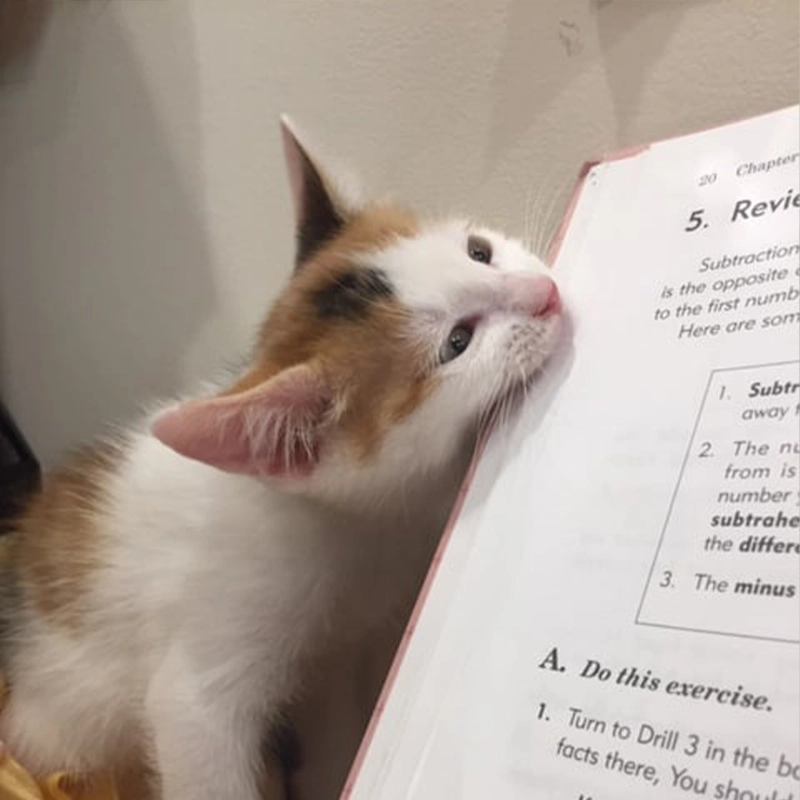
Toxic and Hazardous Foods for your Pets

This is a fantastic article from Veterinary Pet Insurance!
If you’d like more information from them, please visit their website petinsurance.com
Toxic Food Guide for Pets
What Not to Feed Dogs and Cats
Dogs and cats are curious by nature, particularly when it comes to food. They’re also very good at begging for a taste of whatever we may be eating or cooking. As cute as they may be, though, our pets can’t always stomach the same foods as us — some food can be toxic and even deadly to their health.
Use this toxic food list as a guide to preventing accidental toxic exposure to your four-legged companion.
Alcohol
Alcohol is rapidly absorbed into the bloodstream and affects pets quickly. Ingestion of alcohol can cause dangerous drops in blood sugar, blood pressure and body temperature. Intoxicated animals can experience seizures and respiratory failure. Desserts containing alcohol or yeast-containing dough are often the unknown culprits.
Caffeine
Coffee, tea, energy drinks, dietary pills or anything containing caffeine should never be given to your pet, as they can affect the heart, stomach, intestines and nervous system. Symptoms include restlessness, hyperactivity, muscle twitching, increased urination, excessive panting, increased heart rate and blood pressure levels and seizures.
Chocolate
Different types of chocolate contain various levels of fat, caffeine and the substances methylxanthines. In general, the darker and richer the chocolate (i.e., baker’s chocolate), the higher the risk of toxicity. Depending on the type and amount of chocolate ingested, dogs may experience vomiting, diarrhoea, urination, hyperactivity, heart arrhythmias, tremors and seizures. Learn about chocolate toxicity.
Fatty Foods
Foods that are high in fat can cause vomiting and diarrhoea. Pancreatitis often follows the ingestion of fatty meal in dogs. Certain breeds like miniature schnauzers, Shetland sheepdogs, and Yorkshire terriers appear to be more susceptible to a bout of pancreatitis than other breeds. Fight the temptation to share fast food leftovers, junk food or foods cooked in grease with your dog.
Fat Trimmings and Bones
Table scraps often contain meat fat that a human didn’t eat and bones. Both are dangerous for dogs. Fat trimmed from meat, both cooked and uncooked, may cause pancreatitis in dogs. And, although it seems natural to give a dog a bone, a dog can choke on it. Bones can also splinter and cause an obstruction or lacerations of your dog’s digestive system. Watch this vet video about dogs and bones.
Fruit Toxins
The specific problem with persimmons, peaches, and plums are the seeds or pits. The seeds from persimmons can cause inflammation of the small intestine in dogs. They can also cause intestinal obstruction, a good possibility if a dog eats the pit from a peach or plum. Plus, peach and plum pits contain cyanide, which is poisonous to both humans and dogs should the pit be broken open and consumed.
According to the Pet Poison Helpline, grapes and raisins have been known to cause acute renal (kidney) failure in dogs. With kidney failure, a pet’s ability to produce urine decreases, which means they are unable to filter toxins out of their system.
Unfortunately, the reason for kidney failure and the amount of grapes/raisins necessary to be toxic to pets is unknown, so all cases of ingestion have the potential to be grave. Depending on the size of the dog, as little as four grapes/raisins can have an adverse effect on your fuzzy friend. Learn more about grape and raisin toxicity.
Milk and Dairy Products
It may be tempting on a hot day to share your ice cream cone with your dog; however, milk and milk-based products can cause diarrhoea and other digestive issues because adult dogs are deficient in lactase necessary for digestion of milk. Ask your veterinarian for safe alternatives.
Mushrooms
Wild mushrooms — which may be found growing in your backyard or on the nature trail where you walk your dog — contain toxins that will trigger numerous organ systems, including the kidneys, liver and brain. Nervous system abnormalities, seizures, coma, vomiting, and death can all result when a dog consumes mushrooms.
Nutmeg
Nutmeg can also be stored in the pantry with other potentially hazardous substances for pets. Often used as a spice for baking, nutmeg’s rich, spicy scent is attractive to dogs. High levels can be fatal. Signs include tremors, seizures and nervous system abnormalities.
Nuts
Abundant in many cookies and candies, certain nuts should not be given to pets. One of the most common online searches for pet owners is “are peanuts safe for dogs?” Some nuts, in fact, are dangerous to pets. Almonds, non-moldy walnuts and pistachios can cause an upset stomach or an obstruction of your dog’s throat and/or intestinal tract; macadamia nuts and mouldy walnuts can cause toxic poisonings. Mouldy walnuts can contain toxic chemical products produced by fungi which cause seizures or neurological signs. Lethargy, vomiting and loss of muscle control are among the effects of nut ingestion. Learn more about nuts dangers to dogs.
Onions and Garlic
Onions contain an ingredient called thiosulphate which is toxic to cats and dogs. The ingestion of onions, onion powder, or even cooked onion causes a condition called hemolytic anaemia, which is characterised by damage to the red blood cells. In other words, onion toxicity can cause the red blood cells circulating through your pet’s body to burst. A small amount can be toxic to your dog or cat.
Garlic, chives, and leeks are also part of the Allium family, and are poisonous to both dogs and cats. Garlic is considered to be about five times as potent as onions, causing oxidative damage to the red blood cells as well as an upset stomach (e.g., nausea, oral irritation, drooling, abdominal pain, vomiting, diarrhoea). Other clinical signs of anaemia may be seen, and include lethargy, pale gums, an elevated heart rate, an increased respiratory rate, weakness, exercise intolerance, and collapse. Onion and garlic poisoning may have a delayed onset, and clinical signs may not be apparent for several days. Immediate veterinary care is recommended.
Raw Eggs
Have you ever accidentally dropped an egg on the kitchen floor while your dog is nearby? Be careful: there are two problems with allowing your dog to eat raw eggs. First: your dog could possibly get food poisoning from bacteria like Salmonella or E. coli. Second: excessive consumption of raw eggs may result in biotin deficiency that can cause skin problems and affect your dog’s coat. Feeding your dog cooked eggs is a safer bet.
Raw Meat and Fish
Raw meat and raw fish, like raw eggs, can contain bacteria that causes food poisoning. Certain kinds of fish such as salmon, trout, shad, or sturgeon can contain a parasite that causes “fish disease.” If not treated, the disease can be fatal within 2 weeks. The first signs of illness are vomiting, fever, and big lymph nodes. Thoroughly cooking the fish will kill the parasite and protect your dog.
Rhubarb
Rhubarb, a vegetable, contains oxalates which trigger abnormalities with the nervous system, kidneys and digestive tract.
Rhubarb is commonly used in recipes for pies, jams, jellies, sauces and juice.
Salt
Believe it or not, common table salt is poisonous to your pet—but it’s not usually from table scraps. The source is often what surprises pet owners: pets often experience salt toxicity as a result of eating household play dough, swallowing too much ocean salt water or ingesting paint balls, which are loaded with salt. Salt toxicity can be very severe and results in neurologic signs such as poor coordination, seizures and brain swelling, and needs to be treated carefully by a veterinarian.
Xylitol
Xylitol is a sugar substitute commonly used in toothpastes, mouthwash, sugarless gum, certain cough medicines and children’s chewable multi-vitamins. It also used in many baked goods and candies. This product is recommended for diabetics and those following a low-carbohydrate diet. However, xylitol is extremely dangerous to your dog.
Ingestion of the product will cause the rapid release of insulin in dogs and result in hypoglycemia. Hypoglycemia results in vomiting, weakness, and sometimes seizures. In some cases,xylitol poisoning can result in liver failure. As little as one stick of xylitol gum could be toxic to a 20-pound dog. Learn more about xylitol poisoning.
Yeast Dough
Unbaked dough that contains yeast can expand in your pet’s stomach or intestines. As the yeast ferments, it releases gases, resulting in nausea, vomiting, diarrhoea and even life-threatening bloat and a twisted stomach. Some yeast dough also ferments into alcohol, which contributes to signs of lethargy and alcohol toxicity.
If you have concerns that your pet may have consumed a toxic substance, please contact your veterinarian or the Australian Animal Poisons Hotline on 1300 869 738 immediately.
Lucky you!
Living closely with wildlife can have benefits. Enjoy your close encounter with Australia’s amazing animals.
If you find any injured wildlife contact your local veterinarian. They will be able to assess the animal as well as pass it on to a relevant carer if required.
